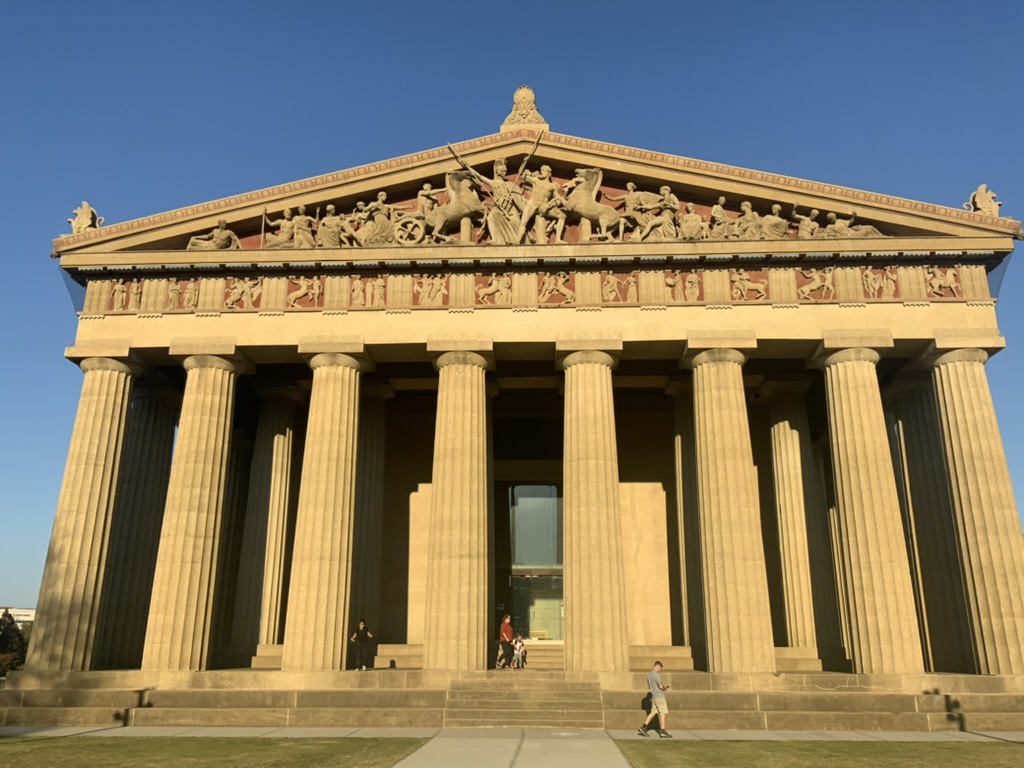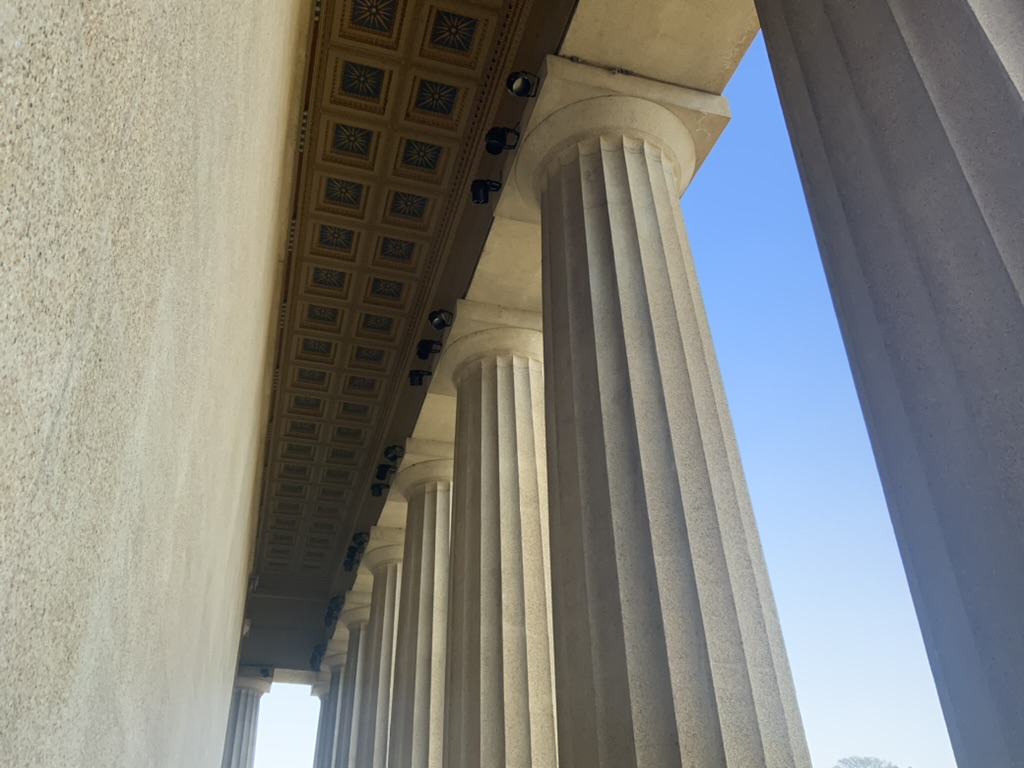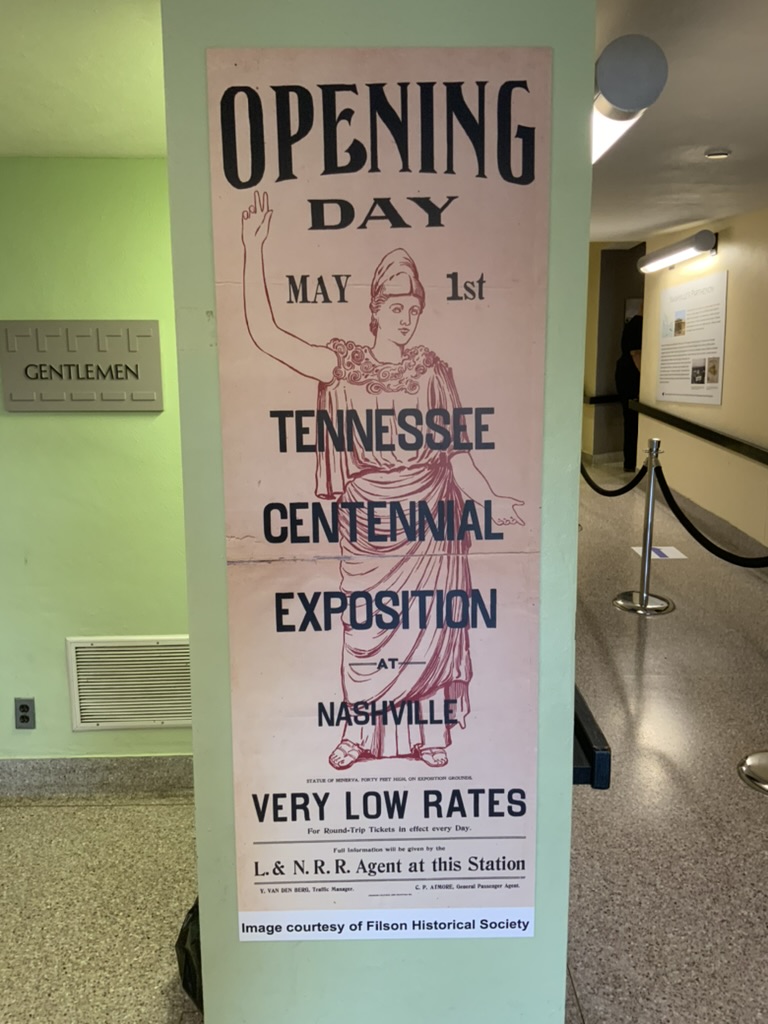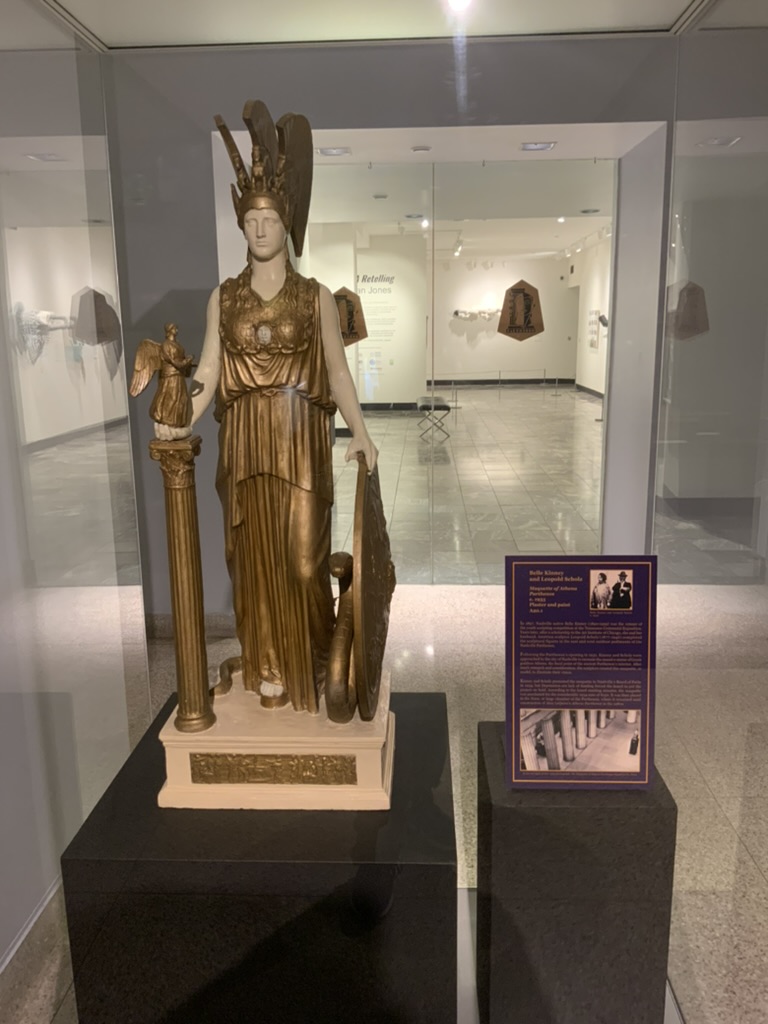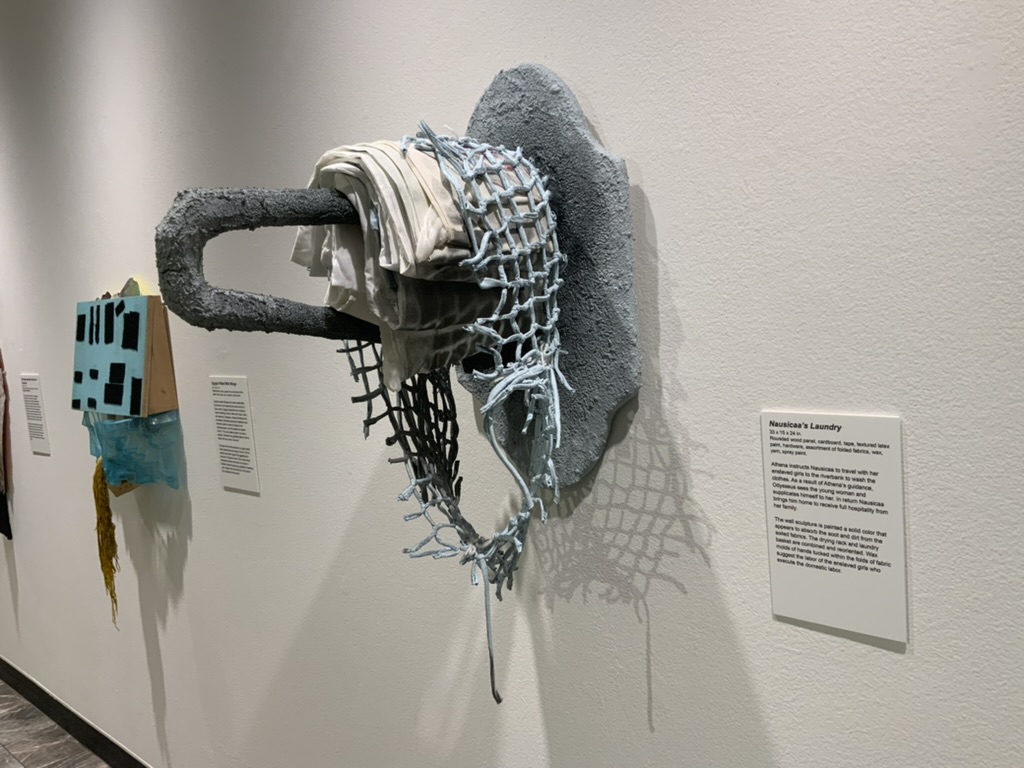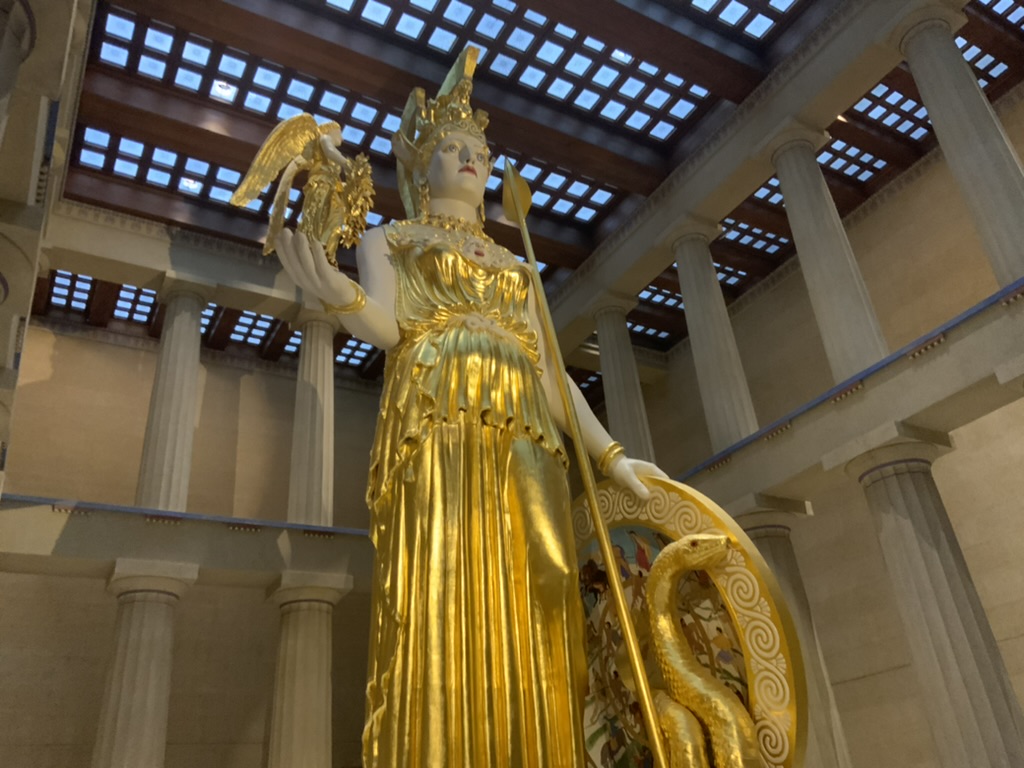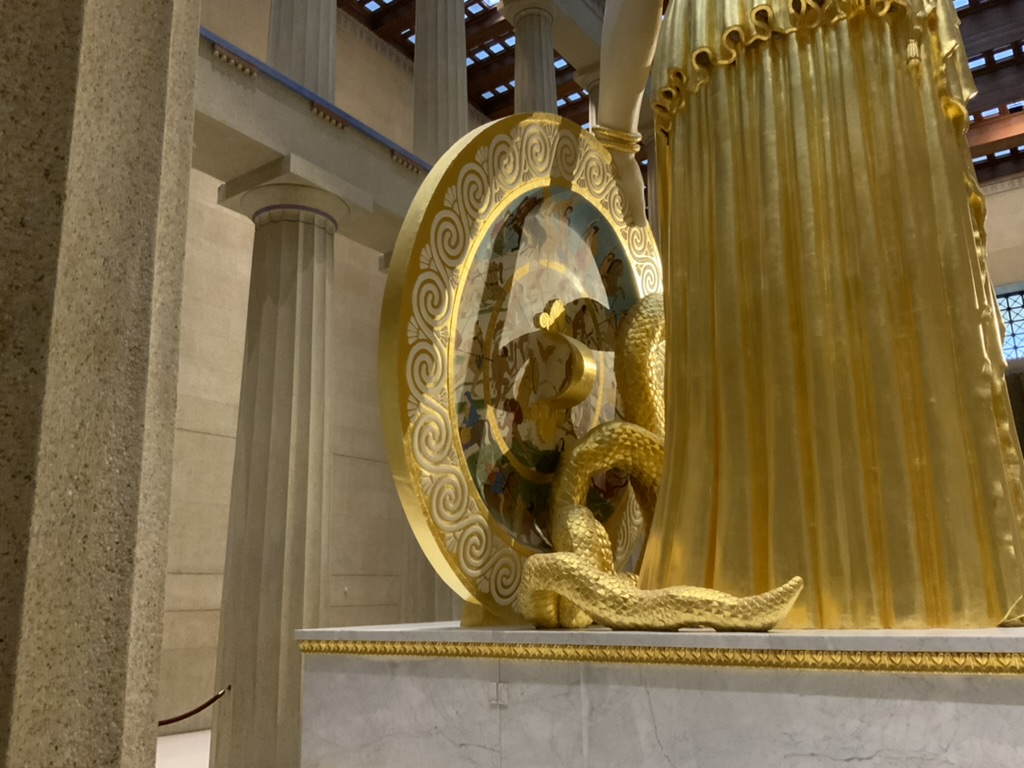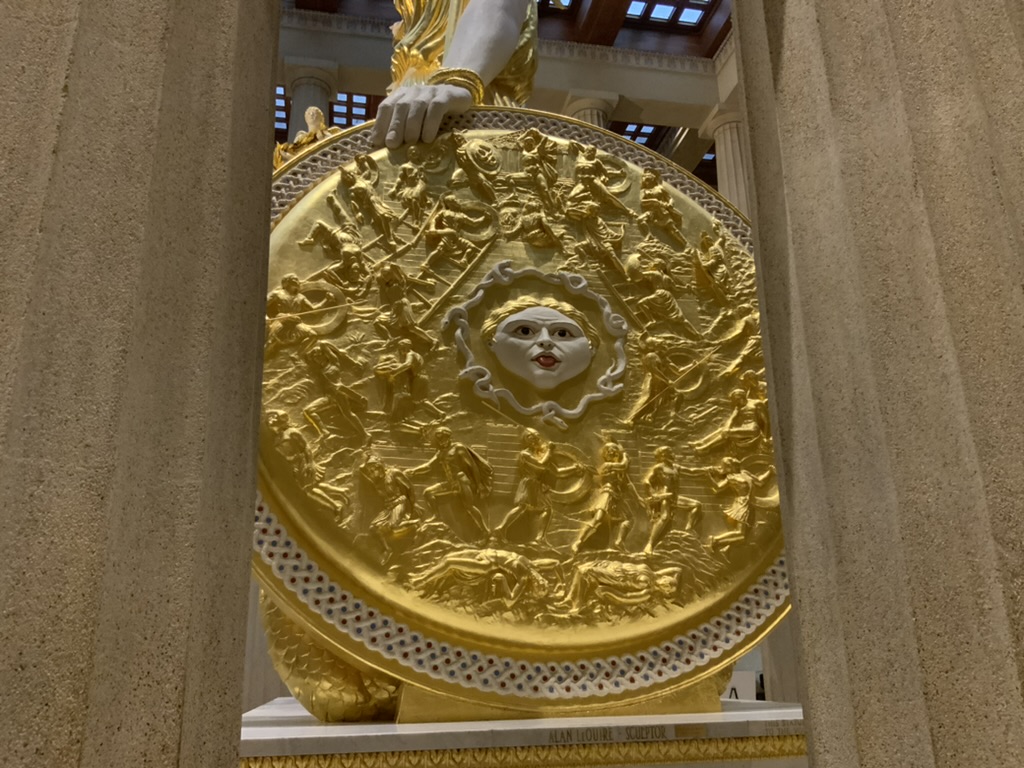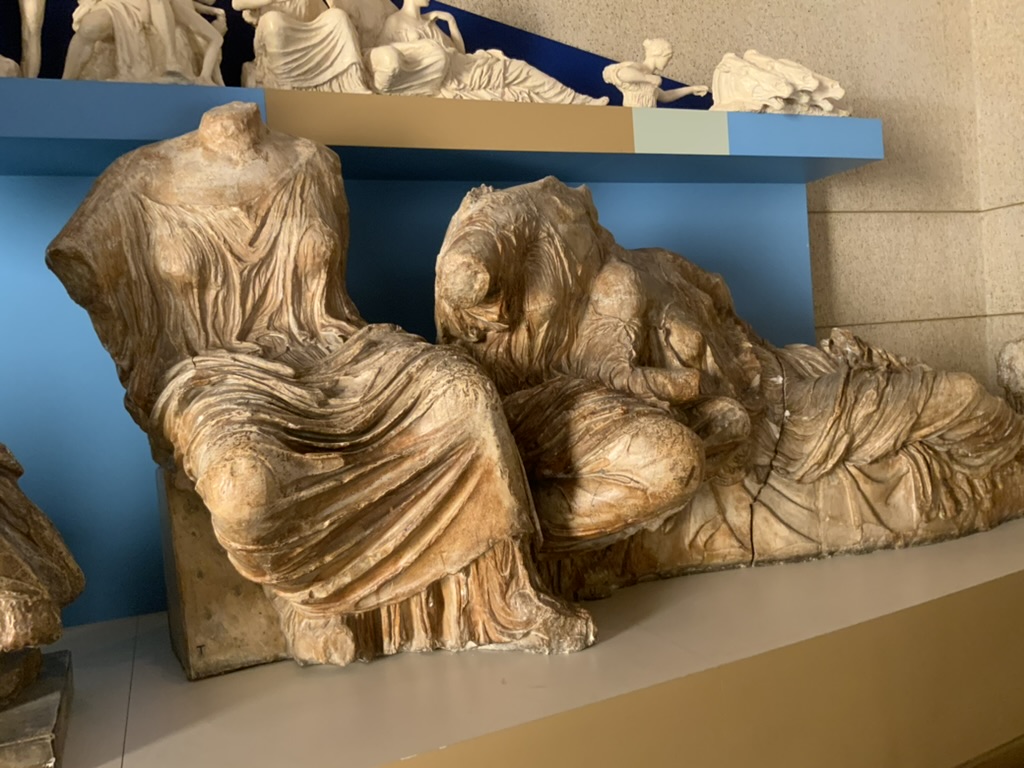
The sun is setting over Nashville, casting the trees in Centennial Park in a perfect golden-hour hue. It’s beautiful, but as I steer my car around the park’s curving roads, I do find myself wondering if I’m in the right place. I don’t have time to relax in the park today. Home is five hours away and I’ll already be lucky if I make it back before midnight. But if I am in the right place – and I am in the right place, aren’t I, I ask my GPS – then it should be obvious. This is a building that sticks out.
And then the road bends one last time and there it is, golden and granite and improbable. Here in the middle of Music City, U.S.A. is a temple to the goddess Athena. Not just a temple, actually, but the temple – the Parthenon itself.

The Parthenon in Nashville, Tennessee [E. Scott]
Or at least a copy of a copy of it. The Parthenon – the original, the “real” one – is of course in Athens, a beautiful ruin that testifies to the glories of the Hellenistic period. Built in the 5th century B.C.E., that Parthenon was a monument to the Athenian victory over the Persians, and it housed the treasury of the Delian League during the height of Athenian power. Some scholars argue that it was never a major site of Athena’s cult as such, who carried out their ritual functions at a different site at the Acropolis. Regardless, it is a site that has maintained its incredible aura, first as the home to an enormous statue of the goddess, and later as a church dedicated to the Virgin Mary and a mosque.
This Parthenon, however, was built of plaster and wood and brick in 1897 to celebrate the centennial anniversary of the state of Tennessee. It was built in part because of Nashville’s nickname, “the Athens of the South.” After the celebration was over, the building was deemed too expensive to tear down, so it remained in place, where it became a popular tourist attraction. Still, the Nashville Parthenon had never been meant to be a perfect structure, and so it was rebuilt, this time in concrete, between 1920 and 1931. (Hence why I say it is a copy of a copy: the current Parthenon is a reconstruction of the replica, a situation which might bring to mind another famous Athenian artifact, the Ship of Theseus.) It has been here ever since, one of Nashville’s civic landmarks, and occasionally showing up in popular culture – sometimes referencing its mythological ties, as when it appeared in a Percy Jackson film, and sometimes just as a symbol of the city, as in Robert Altman’s Nashville.
Still, copy or no, when one can visit the Temple of Athena, one must visit the Temple of Athena.
The great statue of Athena Parthenos, the original of which was lost centuries ago, was not part of the replica until the 1990s when the American sculptor Alan LeQuire supervised the construction of a 41-foot tall statue made of aluminum and steel covered with fiberglass, plaster, and gold leaf. Athena holds a statue of Nike in her hand, which looks small as a doll; on the floor next to the statue is a measuring stick with a sign that reads: “NIKE IS 6 ft 4 in TALL – NIKE looks small in ATHENA’S HAND – How TALL are you?” It really does communicate just how large the statue is, to think that the hand-puppet of a companion she carried is herself tall enough to play in the NBA.
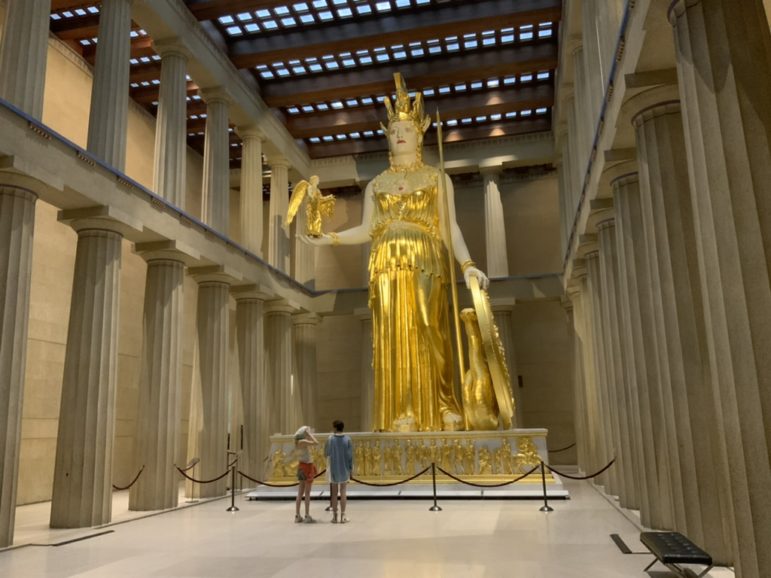
The 41-foot tall statue of Athena Parthenos inside the Parthenon in Nashville, Tennessee [E. Scott]
Today the Nashville Parthenon is primarily an art museum, holding a permanent collection of American paintings and a rotating exhibition in its basement. When I visited last week, the exhibition was called The Odyssey: A Retelling, by the artist Lisa Bachman Jones, which featured numerous abstract sculptures inspired by episodes from the Homeric poem. My favorite of these was a piece called Nausicaa’s Laundry, which evokes cloth drying on a rack, in reference to the scene in which Odysseus meets Nausicaa and her maidens while they are washing laundry at the behest of Athena.
As I said, however, I was short on time, and so I did not spend long exploring the exhibit or the permanent collection. Instead, I sprinted upstairs to the main portion of the Parthenon, the naos, where the giant statue of Athena is housed. It was early evening on a weekday when I visited, and there were only a few other people visiting beside me. I loitered at the entrance while they visited with the statue, biding my time until I could have a few minutes alone with her. Once the naos was clear, I stepped forward and knelt before Athena, whispering a Homeric ode to her, asking her to give my child a portion of wisdom and guidance, as she had given to Telemachus in the age of myth.
I have been struck for many years by how often we in the modern Pagan movement must find our gods in museums, quietly proving our devotion in a setting intended for historical education or aesthetic appreciation. The statues and icons of the gods are presented behind glass, shards of the past, unable to be touched, much less to receive offerings. The Nashville Parthenon is the apotheosis of that phenomenon, a place where the museum itself is the artifact, where the statues and columns have outgrown their glass cases and become living conduits of divine transmission. Or to put it another way: they meant to make a temporary stall for a fair and accidentally built a genuine temple to Athena.

A well-loved lion’s head in the door of the Parthenon in Nashville, Tennessee [E. Scott]
A curmudgeon could say that there is nothing real about the Parthenon, that it is entirely a project of secular society, and that if they felt there were any real connection to a Pagan goddess there they’d probably want it burned to the ground. Well, maybe. But this is the story of modern Paganism: when we find a connection to the pagan past, no matter how tenuous, we seize on it and breathe life into it. If it is fake, it is no matter; we will make it real.
I (of course) stopped by the gift shop for a postcard to hang on my wall. As I checked out, the woman at the counter clocked the necklace hanging from the silver chain around my neck. “Hey,” she said as she rang me up. “I like your Thor’s Hammer.” I smiled as I collected my bag of prints, recognizing all the implications in her voice, that secret code with which we Pagans acknowledge each other when we meet by chance.
“Hey,” I said back to her. “I really like your temple.”
The Wild Hunt is not responsible for links to external content.
To join a conversation on this post:
Visit our The Wild Hunt subreddit! Point your favorite browser to https://www.reddit.com/r/The_Wild_Hunt_News/, then click “JOIN”. Make sure to click the bell, too, to be notified of new articles posted to our subreddit.
